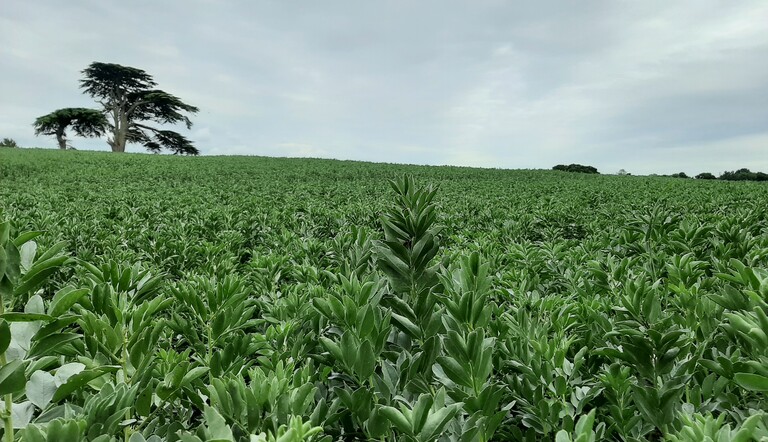
Protecting peas and beans from aphid attacks with APHOX®

Pea aphid
Pea aphids (Acyrthosiphon pisum) are a major pest in combining and vining peas, and can reduce crop yields by damaging flowers, causing the failure of pods to fill, and generally reducing the crop’s overall efficiency.
Pea aphids also transmit a number of detrimental viruses and produce honeydew which encourages the colonisation and growth of saprophytic fungi such as sooty moulds. The sticky nature of honeydew also increases operating costs by requiring vining machinery to be washed more frequently.

Pea aphid. Photo copyright Entomology Today.
Pea aphids are found in two forms, winged and wingless. The winged variety migrates into pea crops in the early summer and is currently active in UK crops where they will rapidly start to reproduce asexually with wingless colonies reaching their highest numbers typically between late June and early July.
As such, crops will need to be monitored from now through until the end of July, and should be treated with an appropriate aphicide such as APHOX® (see details below) as soon as the following thresholds have been exceeded:
- Combining peas: 20% or more of plants infested at early flowering
- Vining peas: 15% or more of plants infested
Black bean aphid
Black bean aphids (Aphis fabae) are typically active from late May onwards, but their arrival in field bean crops depends on prevailing weather conditions. As a general rule, crops should be checked before mid-June and treated as soon as the UK threshold (10% of bean plants infested) is reached.
Like pea aphids, black bean aphids are also found in winged and wingless forms and are found in large numbers on the undersides of leaves. They too produce honeydew which can encourage chocolate spot and the colonisation and growth of saprophytic fungi such as sooty moulds.

Black bean aphids. Picture copyright Nature Spot.
In addition to their ability to reduce crop yields by sucking sap from stems and leaves and causing the distortion of shoots resulting in stunted plants, reduced yield, and spoiled crops, growers of seed crops or beans destined for a high value market should also be aware of the risk of aphid borne virus transmission – due to the severity of the damage caused by these viruses, treatment is advised when 5% of plants are infested.
APHOX® to the rescue – effective against aphids, safer for bees
APHOX® is ADAMA’s fast-acting aphicide for use in field beans, broad beans, vining peas and combinable peas.
Containing 500g/kg pirimicarb, APHOX® works via systemic and vapour action and is supplied in 1kg and 5kg packs as a water dispersible granule which can be used once per season at a maximum individual dose of 280g/ha.
APHOX® has a favourable profile on bees and many other important beneficial insects: in scenarios where aphid numbers and feeding damage is not being controlled adequately by predators and parasites, APHOX® is the best option as it gives good knockdown of aphid colonies and a systemic action that allows beneficials to safely recolonize relatively quickly.
APHOX® best practice advice
To maximise the efficacy of APHOX, and to ensure crops remain protected for longer, follow these simple application guidelines:
- 1. Use a sufficient spray volume to ensure full canopy penetration: at least 200l/ha.
- 2. Use an even higher water volume for dense crops to ensure coverage of any aphid colonies lower down in the canopy
- 3. Use an increased water volume when spraying in hot conditions: spray droplet volatisation increases as the mercury rises, with temperatures as low as 21oC enough to cause efficacy to be reduced.
- 4. Consider halting application if temperatures exceed 25oC.
- 5. APHOX® has a systemic and vapour action, so there is no need for fine spray droplets
- 6. APHOX® has a low impact on bees. To reduce this impact further, avoid the heat of the day by applying during the early morning or late evening when bees are less active.
- 7. APHOX® is not compatible with magnesium sulphate.
- 8. As a water dispersible granule, APHOX® mixes well but there is always a risk when using micro-nutrients that particles will clog sprayer filters. Therefore, don’t take chances and always check tank mix compatibility.
- 9. APHOX® works without an adjuvant, but its efficacy will be even better when used in conjunction with a surfactant-based adjuvant.
APHOX® dose rates and latest application timings
| Crop | Max. individual dose | Max. treatments per crop | Latest time of application |
| Broad beans (fresh) | 280 g/ha | 1 | 3 days before harvest |
| Vining peas | 280 g/ha | 1 | 7 days before harvest |
| Combinable peas | 280 g/ha | 1 | 14 days before harvest |
| Field beans | 280 g/ha | 1 | 14 days before harvest |

APHOX® (pirimicarb 500 g/kg) is a fact-acting aphicide for use in field beans, broad beans, vining peas and combining peas.